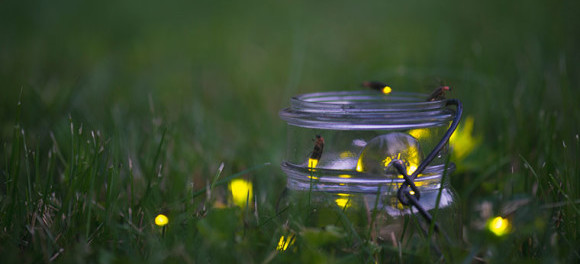Getting Under Your Skin

Warm summer evenings are often accented with the seemingly magical illumination of fireflies.
While not the only species that glows, fireflies are perhaps the best-known example of bioluminescence—a chemical process that produces light. First discovered in 1885 by German scientist Emil du Bois-Reymond, the bioluminescent reaction in fireflies has become a key component in today’s biotechnology and medicine research.
At UT’s Center for Environmental Biotechnology, Tingting Xu and her team are refining the bioluminescent process and applying it to human cells to create a new type of implantable biosensor that can detect and treat problems inside the body.
“The technology we’re developing uses bioluminescent human cells we have genetically modified to self-produce light,” said Xu, a postdoctoral research associate in the emerging field of theranostic nanomedicine.
Xu’s latest endeavor has roots in one of her previous projects—the Smart Bandage, which pairs a bioluminescent bioreporter computer chip with a genetically engineered bacterium that emits light. The integrated biosensor detects the presence of bacteria—such as staph—then treats the infection by releasing antimicrobials from the nanofiber webbed bandage onto the skin.
“Our Smart Bandage is for treating bacteria and infections,” Xu explained. “We’ve leveraged that technology in this new NSF-funded project to produce an implantable biosensor that will be used for detection and treatment of diseases such as cancer.” The new device will act much the same way as the Smart Bandage, but it will be under the skin instead of on the surface.
See the Light
The trick is piecing together several different DNA fragments from a bioluminescent bacterium and placing the entire genetic pathway into a human cell. “With our system, it’s all in one. The cells just sit there and glow,” Xu said.
As interesting as that sounds, most people probably wouldn’t want to have parts of their body glowing all the time. That’s why Xu and her team engineered the system to illuminate only when certain biological conditions are present. “The concept is to bring the camera inside the body to detect the signal next to where it’s going off,” she said.
One scenario where this capability could be extremely useful is for cancer patients in remission. After initial treatments, a specifically designed biosensor would be implanted where the cancer was first discovered. If cancerous cells return, the biological markers in the sensor would recognize the situation and cause light to appear. The light would then trigger a device—such as a monitor on the patient’s wrist—that suggests seeing a doctor as soon as possible.
Many other potential applications exist for the technology, from monitoring blood glucose levels in diabetics to determining how chemicals and pollutants in water may affect human cells. “As long as you can find the genetic switch for it, you can use it for anything,” Xu said.
Complete Package
Designed in collaboration with the Department of Electrical Engineering and Computer Science, an electronic chip detects the light emitting from the bioluminescent cell. The challenge is to get the signal from the chip out through the tissue to the surface of the skin and beyond.
The team is currently running tests with small animals such as mice. Once a viable way to transmit the signal to the receiver is found, they will continue with larger animals and eventually humans.
The use of human cells poses yet another significant problem. “We can’t just shoot the cells in the body, because we don’t want them to be diffused and blended in,” Xu said. “We had to figure out how to isolate them from the human body and protect it.”
Xu reached out to colleagues in the Department of Materials Science and Engineering for answers. It turns out there were several options for assembling a biocompatible armor for the biosensor. “We chose collagen, which is a natural protein found in the body,” Xu said. After the bioluminescent human cells are merged with the electronic chip, it is wrapped in collagen to form a solid ball ready to be implanted.
Although the device is still in the very early stages, Xu is confident of its potential. “Once we add the therapeutic component, our biosensor will be able to detect, treat, and monitor all in one,” she said.
In the dawning era of personalized medicine, this technology is poised to play a significant role in letting us enjoy healthier lives—and more firefly-filled summer evenings.
Leave a comment